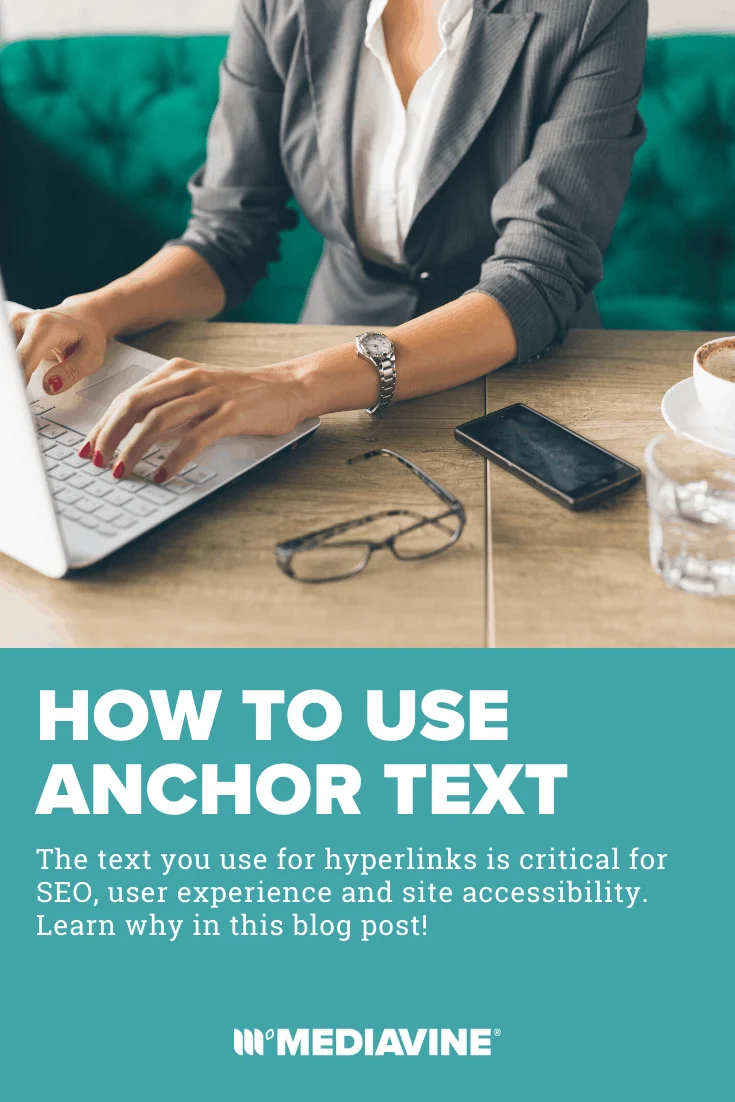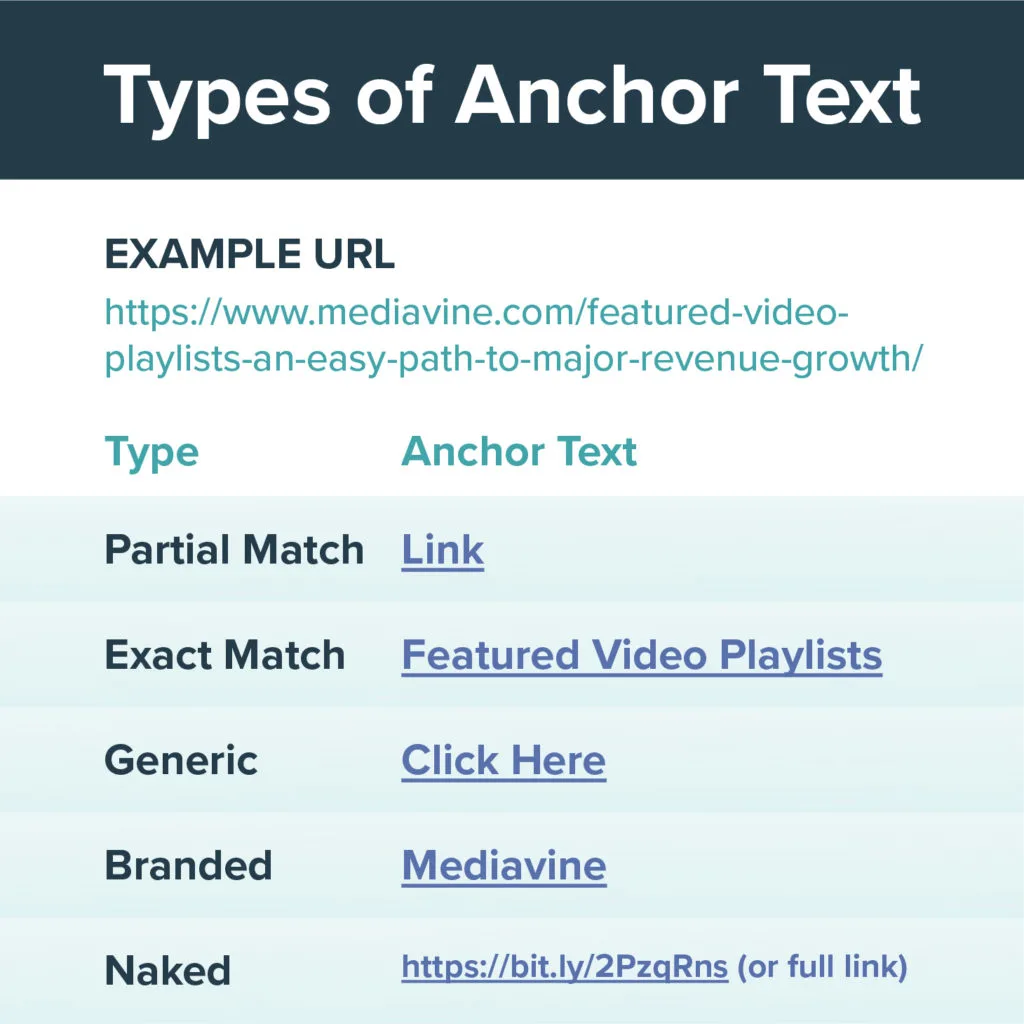What is Anchor Text: SEO Best Practices for Links


You know those words that appear in an html hyperlink, a.k.a. the link text between the opening <a> and closing </a>?
That’s called the anchor text and it matters quite a lot.
Anchor text is critical for user experience, site accessibility and SEO (Search Engine Optimization) alike.
Most of the time, the term “anchor text” is used in an SEO context, but user experience and site accessibility are equally important.
Why? Because that’s ultimately what drove the decision to make anchor text such an important ranking signal for SEO, which in turn should help you create better anchor text.
It’s all intertwined and we’ll break it down below in a new episode of my new YouTube series SEO Like A CEO:
From a user experience standpoint, there are basically two kinds of anchor text:
Put yourself in the shoes of a casual reader instead of one who is thoroughly reading all content.
Can you quickly look at the anchor text and know where that link is taking you?
If it’s linked on words like “click here,” or the URL itself, then probably not.
Example: Which anchor text below best shows what I’m linking to?
All four link to the same page, Featured Video Playlists. While this is a slightly exaggerated example, we hope it’s clear that #1 is good and #2-4 leave a little something to be desired (or a lot).
Here’s the thing, though: In the past, SEO experts might have actually recommended options 2-4 as well. As far as user experience goes however, 2-4 are a mystery to the user and may end up disappointing them.
Long story short: Make it easy for users and you’ll improve their experiences.

Back to cryptic links 2-4 above: Playing choose-your-own-adventure with users is bad enough, but imagine if they’re visually impaired and need links read aloud. That’s why website accessibility is so important.
Screen readers, by default, will read the anchor text unless you provide an ARIA label.
This means anchor text is vitally important to those users.
The majority of users might not be using screen readers or text-to-speech, but those who do will have a harder time piecing together the context around the link.
They desperately need anchor text that leaves as little to chance as possible.
This is likely why you’re here — to learn how to write anchor text for SEO and how that influences rankings.
When Google crawls your website, it behaves much like a user. In other words, links guide the way.
Google uses anchor text, along with many other signals, to figure out both the content you’re linking to and the page you’re linking from.
The official Google SEO Starter Guide offers four pieces of advice when writing anchor text, or link text:
Google Anchor Text Advice Summary: Link on short, descriptive text for whatever you’re linking to.
“Okay, but I read from [insert alleged SEO expert on the Internets] that since Panda, I need to diversify my link text.”
Yes, other SEO blogs frequently talk about different types of anchor text.
You’ll often see Exact Match, Branded, Partial Match, Naked and Generic Anchors, each of which we’ll break down below.
Exact Match anchor text links on EXACTLY the keyword or key phrase you’re going after. For this article, that would be linking to this post on the phrase “anchor text.”
Partial Match anchor text is just as the name implies, a partial match of the keyword you’re writing. Here, that might mean linking to this post on a phrase like “anchor” or “link text.”
Naked is just using the link itself. e.g. “https://bit.ly/2PzqRns” … not great for SEO or for user experience.
Branded links are links to a brand or website name. For this article, it would be linking on “Mediavine.”
Generic links are using phrases like “click here” or “learn more.” You already know how we feel about that.

SEO sites may advise you to use a variety of these to make things look “natural” and even break down percentages of how many you should use from each category. However, Google flat out asks you not to use naked or generic links.
We’d strongly recommend you do NOT use them, at all. Stick to exact and partial match anchor text, especially for internal links.
Most of the algorithm changes in Panda cited by these SEO sites is related to combatting spam, or link abuse. Generally, the idea is to stop unnatural links pointed towards your site from an external source.
For example, if you bought links, more than likely you’d pay a service who would place all links to your site using the same text.
Assuming your well-intentioned, white-hat SEO efforts do not include buying links, then more than likely, this rule doesn’t apply to you.
In fact, if you’re just worried about the anchor text you use when linking to internal articles and the occasional external page, then it’s safe to ignore any “expert” SEO advice and stick to the SEO advice Google provides.
In summary, make your anchor text good, clear and concise. Include your keywords and as little else as possible.
It’s also important to note that both partial and exact keywords are good to link on. Google is smart. Google uses machine learning to read the text around your links and establish the proper “context.”
So if your anchor text doesn’t 100% match the keyword of the page you’re linking to don’t worry. Your anchor text can use partial keywords as long as the other important words appear nearby for context.
Put another way, don’t stress about shoehorning awkward link text into your content if it hurts the readability of your post. High quality content is still the highest priority. Google will figure it out.
Just relax, take a deep breath and whenever possible try to use the keyword, or as close as you can, when you link.
To keep up with Mediavine’s SEO Like A CEO series, please subscribe to our YouTube Channel. Don’t miss these other SEO resources from our blog and help docs.
Stay up to date with the latest from Mediavine
 Eric Hochberger
Eric Hochberger
Google recently announced that any publisher passing the new Page Experience algorithm will be considered for the top story carousels in Google News. This shift comes after years of Google …
 Eric Hochberger
Eric Hochberger
Whether it’s for SEO or monetization purposes, we always encourage publishers to update old content. We’ve discussed at length how specifically to update content to improve RPM and optimize for …
 Eric Hochberger
Eric Hochberger
Today on the Mediavine blog, we’re throwing it back to 2017, famously known to SEO experts across the web as the Year of the Parboil. It was never actually known …